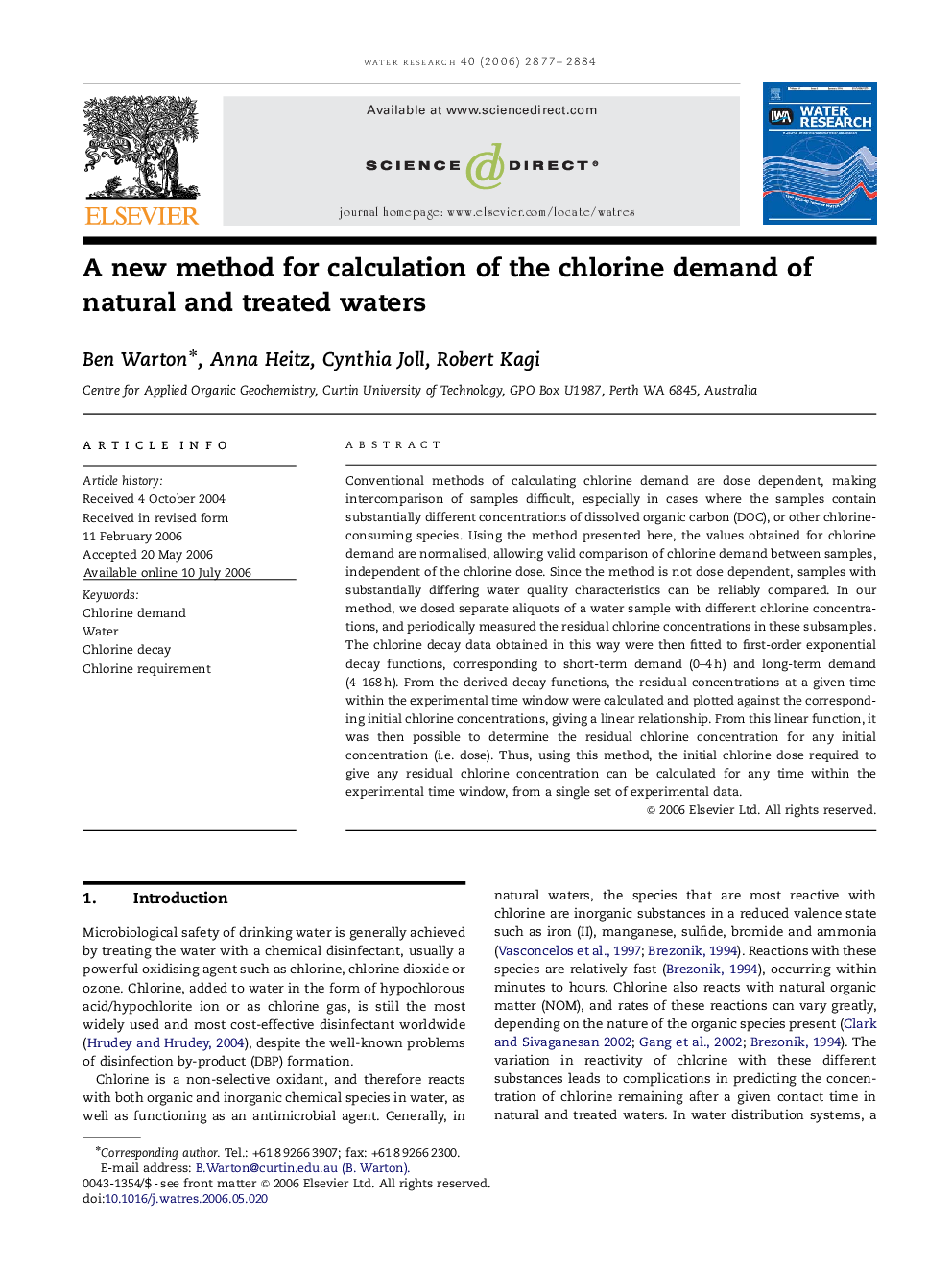| Article ID | Journal | Published Year | Pages | File Type |
|---|---|---|---|---|
| 4486138 | Water Research | 2006 | 8 Pages |
Conventional methods of calculating chlorine demand are dose dependent, making intercomparison of samples difficult, especially in cases where the samples contain substantially different concentrations of dissolved organic carbon (DOC), or other chlorine-consuming species. Using the method presented here, the values obtained for chlorine demand are normalised, allowing valid comparison of chlorine demand between samples, independent of the chlorine dose. Since the method is not dose dependent, samples with substantially differing water quality characteristics can be reliably compared. In our method, we dosed separate aliquots of a water sample with different chlorine concentrations, and periodically measured the residual chlorine concentrations in these subsamples. The chlorine decay data obtained in this way were then fitted to first-order exponential decay functions, corresponding to short-term demand (0–4 h) and long-term demand (4–168 h). From the derived decay functions, the residual concentrations at a given time within the experimental time window were calculated and plotted against the corresponding initial chlorine concentrations, giving a linear relationship. From this linear function, it was then possible to determine the residual chlorine concentration for any initial concentration (i.e. dose). Thus, using this method, the initial chlorine dose required to give any residual chlorine concentration can be calculated for any time within the experimental time window, from a single set of experimental data.
